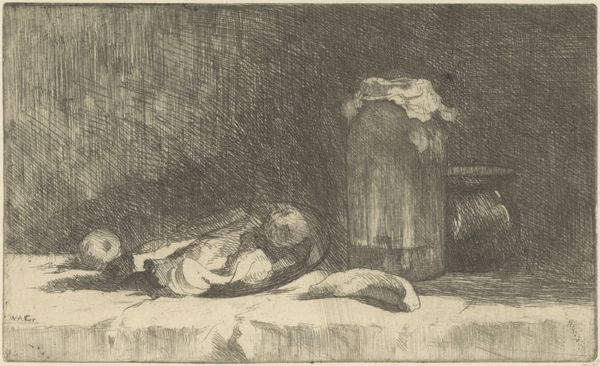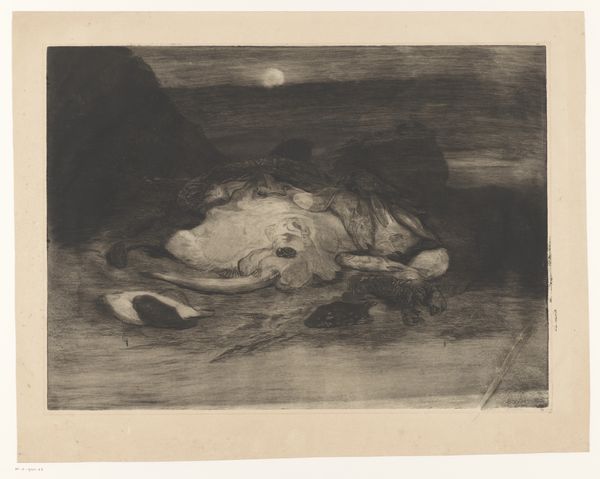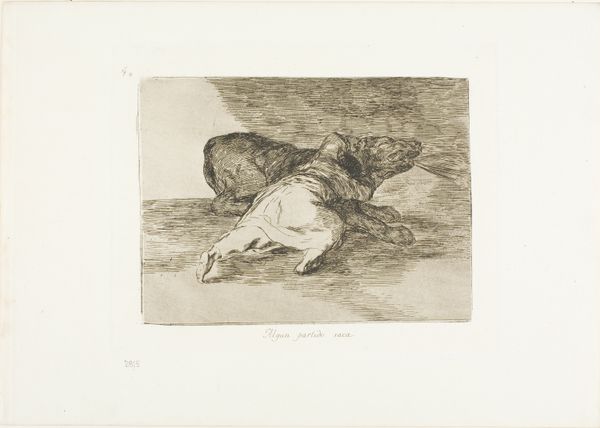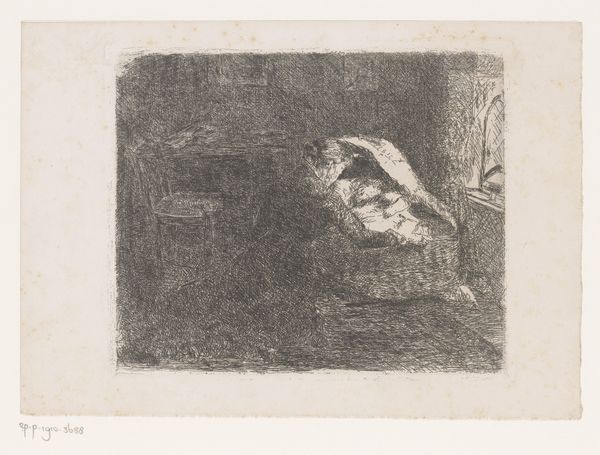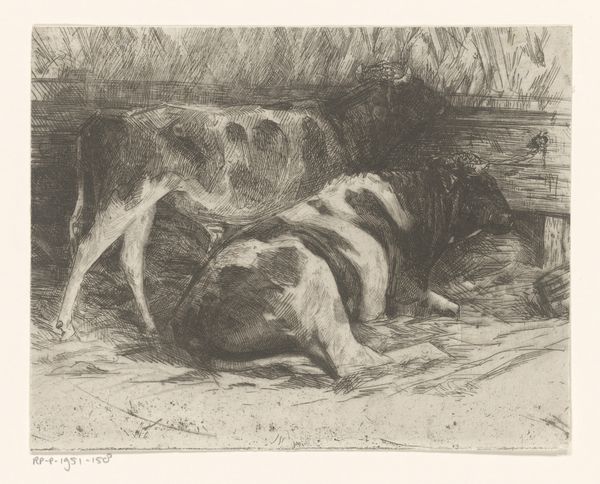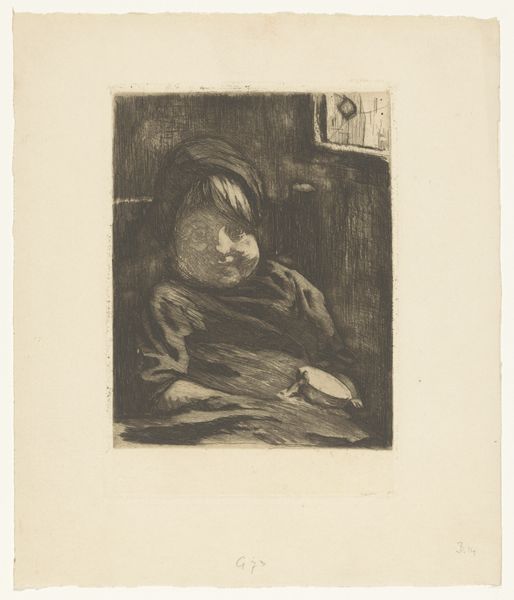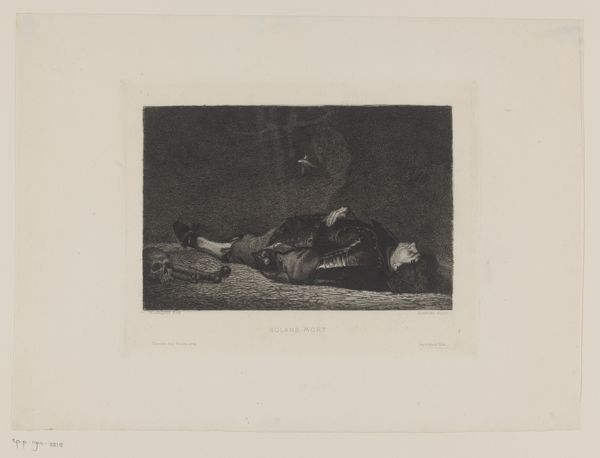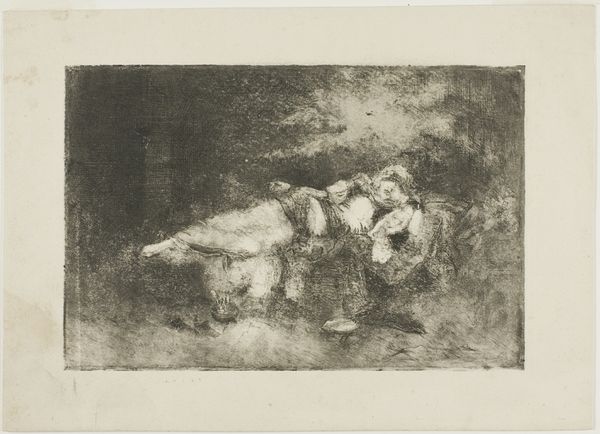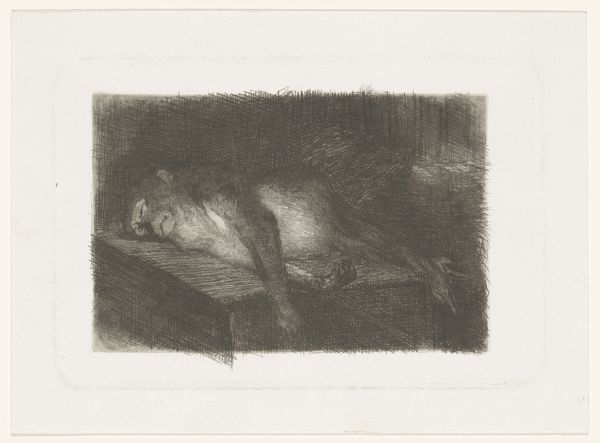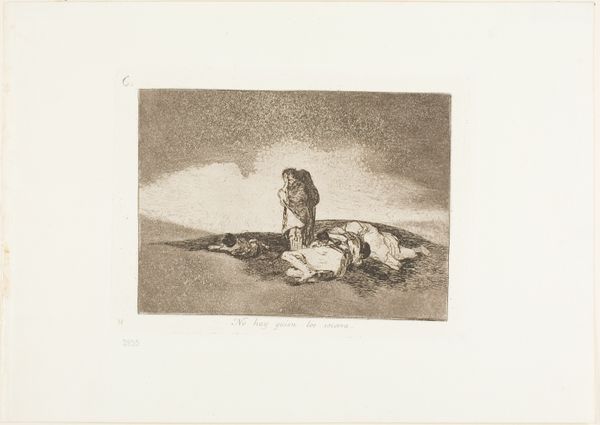
print, etching
#
dutch-golden-age
# print
#
etching
#
form
#
geometric
#
line
Dimensions: height 89 mm, width 130 mm
Copyright: Rijks Museum: Open Domain
Curator: Immediately I’m drawn to the stark contrast and muted tones in this piece. It feels…quiet. A very intimate glimpse into domestic space. Editor: This is Willem Adrianus Grondhout's "Still Life with Pitcher and Onions", dating sometime between 1888 and 1934. It's currently held here at the Rijksmuseum. It's an etching, which is a type of printmaking. Curator: Yes, the etching technique lends itself well to this almost melancholic stillness. The lines are delicate but purposeful, and the interplay of light and shadow creates a captivating depth. The onion is almost anthropomorphic – it reminds me of representations of bound people that can imply subjugation. What power dynamics are we seeing at play here in these quotidian objects? Editor: It's interesting that you pick up on that possible relationship between the forms depicted. The "Still Life" genre carries a complicated political history in the Netherlands. As artistic styles were being revolutionized across Europe, the art world remained deeply class-conscious. The still life tradition offered opportunities for patronage by different tiers of society. The display of domestic objects served as potent symbols of social status and household economics. The art market created the public role for Grondhout and others working within that specific visual economy. Curator: The materiality of the etching itself is also a crucial layer here. Etchings democratize access to art. Was this particular scene intended for a broader audience or to make a pointed political or social statement? Editor: I suspect Grondhout, being of his time, understood how certain people in society might use still life in their homes as subtle indicators of status. The work’s reception matters, right? How and where such prints were displayed also reinforces hierarchies. Curator: Exactly, it's a push-and-pull between the artist's intention, the visual language employed, and the audience's interpretation within broader social contexts. Ultimately the social, historical, and gender politics remain relevant through time. Editor: Precisely. Looking closer at the technique helps illuminate the possibilities that he recognized by working with such forms and making use of the print medium. A fascinating confluence to consider. Curator: Absolutely. Thank you for providing context, I have gained such a broadened appreciation for Grondhout's intention.
Comments
No comments
Be the first to comment and join the conversation on the ultimate creative platform.
